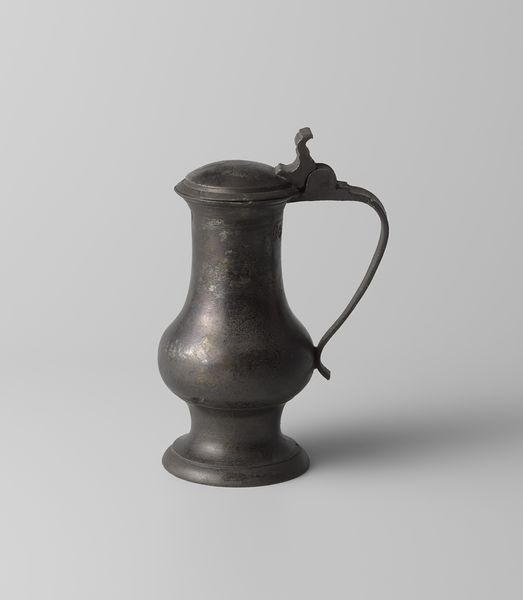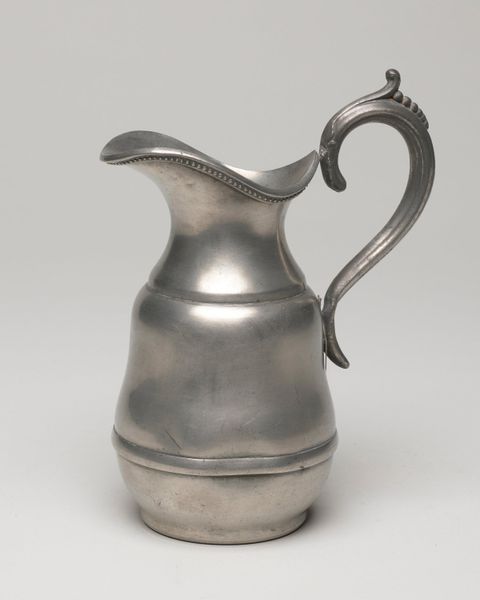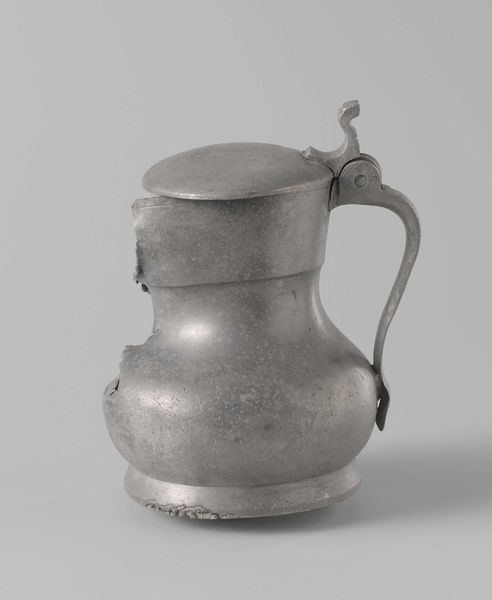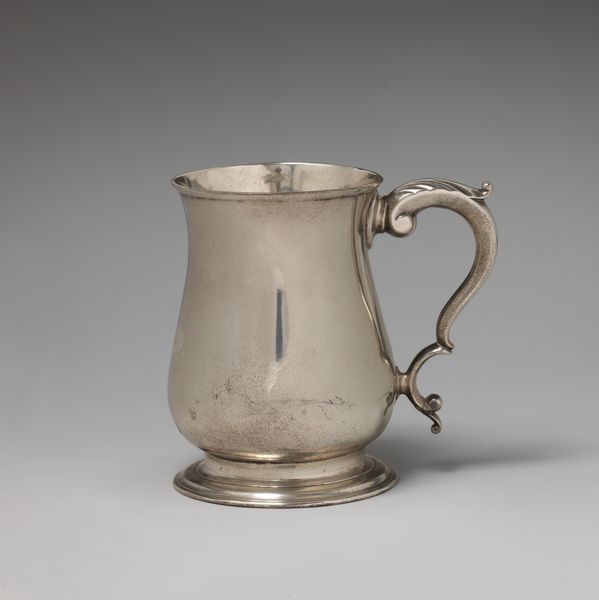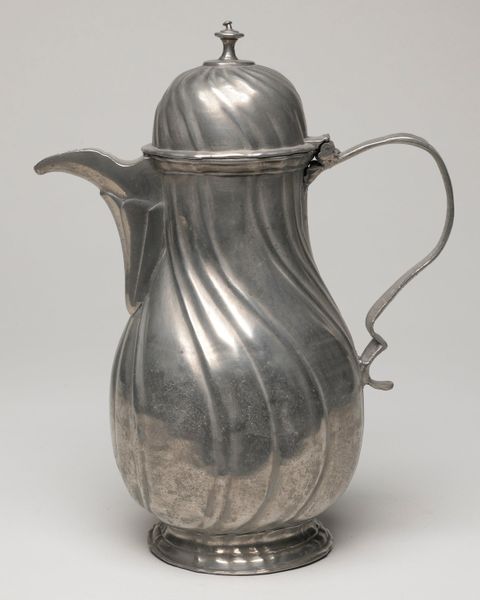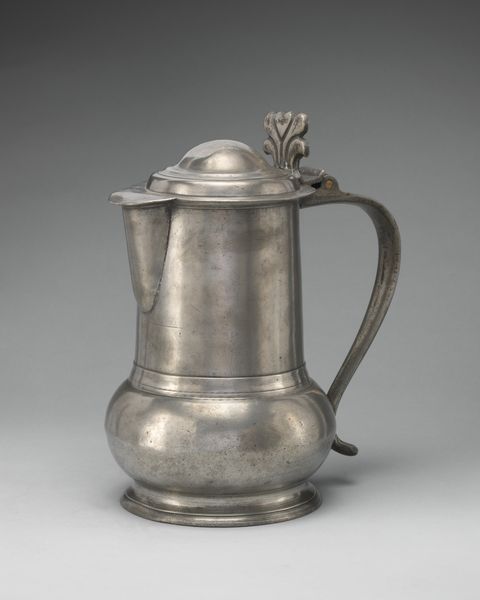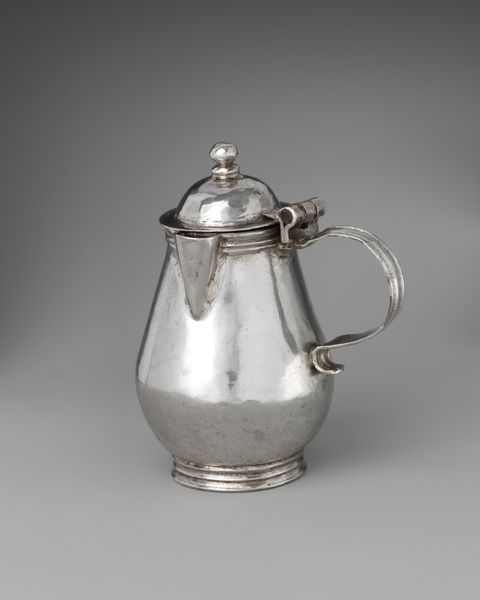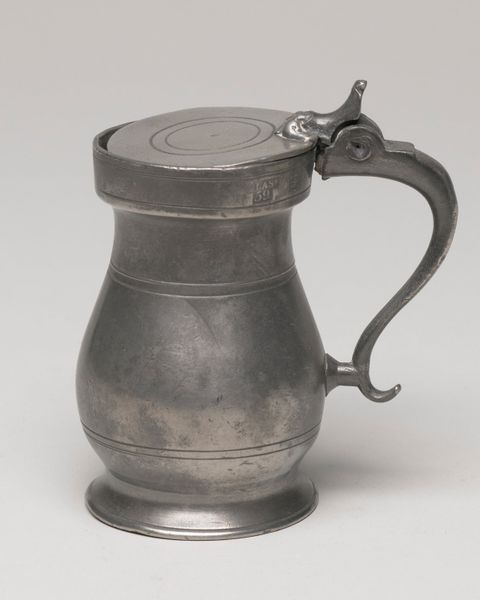
metal
#
baroque
#
metal
#
decorative-art
Dimensions: height 34 cm, diameter 11.9 cm, width 21.3 cm
Copyright: Rijks Museum: Open Domain
Editor: This is a pewter pitcher, believed to be crafted between 1740 and 1760. The material and its almost industrial look feel surprising for something described as Baroque, how should we understand that connection? Curator: Let’s consider what it means to categorize something like this pitcher, made of base metal. What social needs does it serve, and who had access to such things? Editor: So, you're suggesting that the baroque label might refer more to the design—that handle, for instance—than to inherent expensiveness? How does its materiality intersect with its function? Curator: Precisely! Consider pewter itself: relatively affordable, durable. Its widespread use speaks volumes about growing consumer culture of the time. Was it crafted by individual artisans or in workshops employing a division of labor? Knowing more about the labor illuminates a richer socio-economic context. Editor: Right. I was focusing too much on its visual style. What’s fascinating is thinking about how this object connects to broader changes in production, consumption, and even social class. I had never thought of that. Curator: Reflect on its wear and tear. Scratches, maybe small dents. These imperfections offer a very material link to the past. Editor: True. The pitcher's "flaws" become part of its story, connecting us to its users and the conditions under which they lived. The piece tells its own history. Thank you. Curator: Indeed. Thinking about objects in this way allows us to reveal history through material evidence and making processes.
Comments
No comments
Be the first to comment and join the conversation on the ultimate creative platform.
